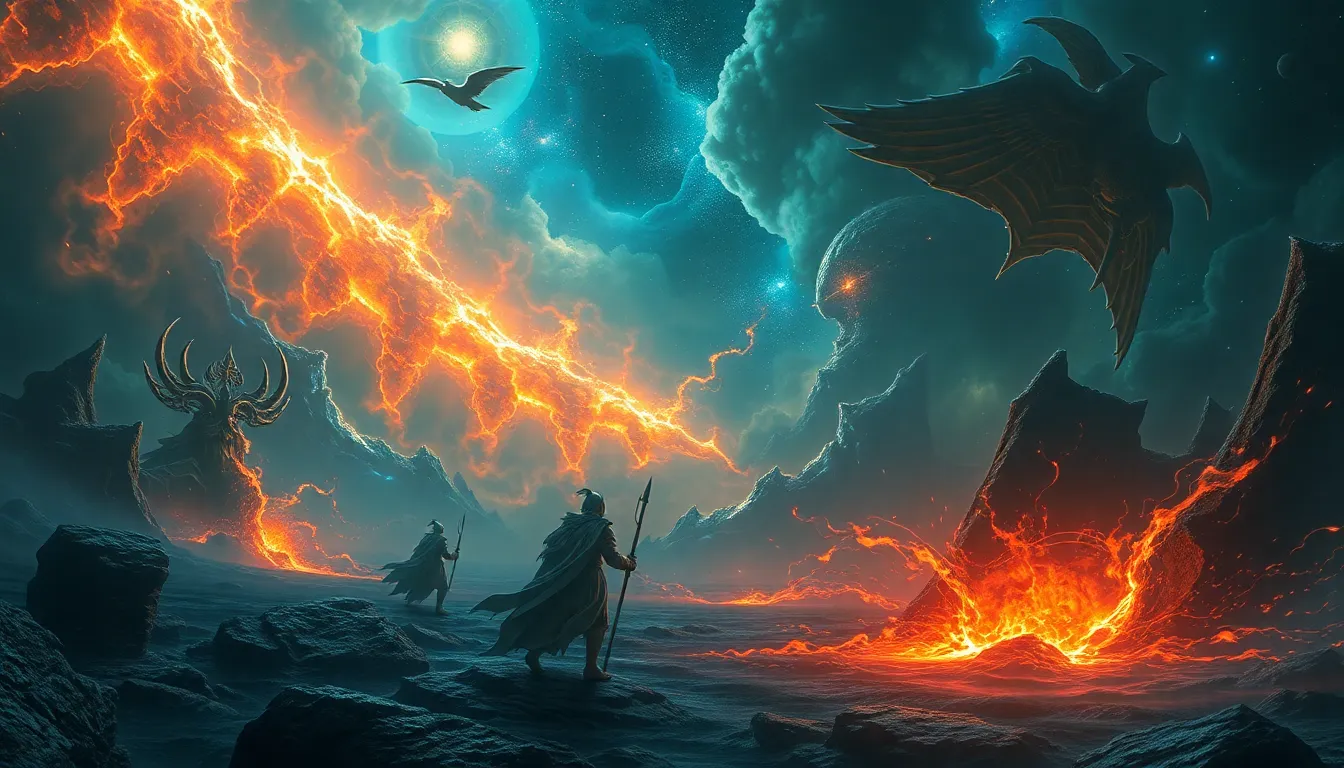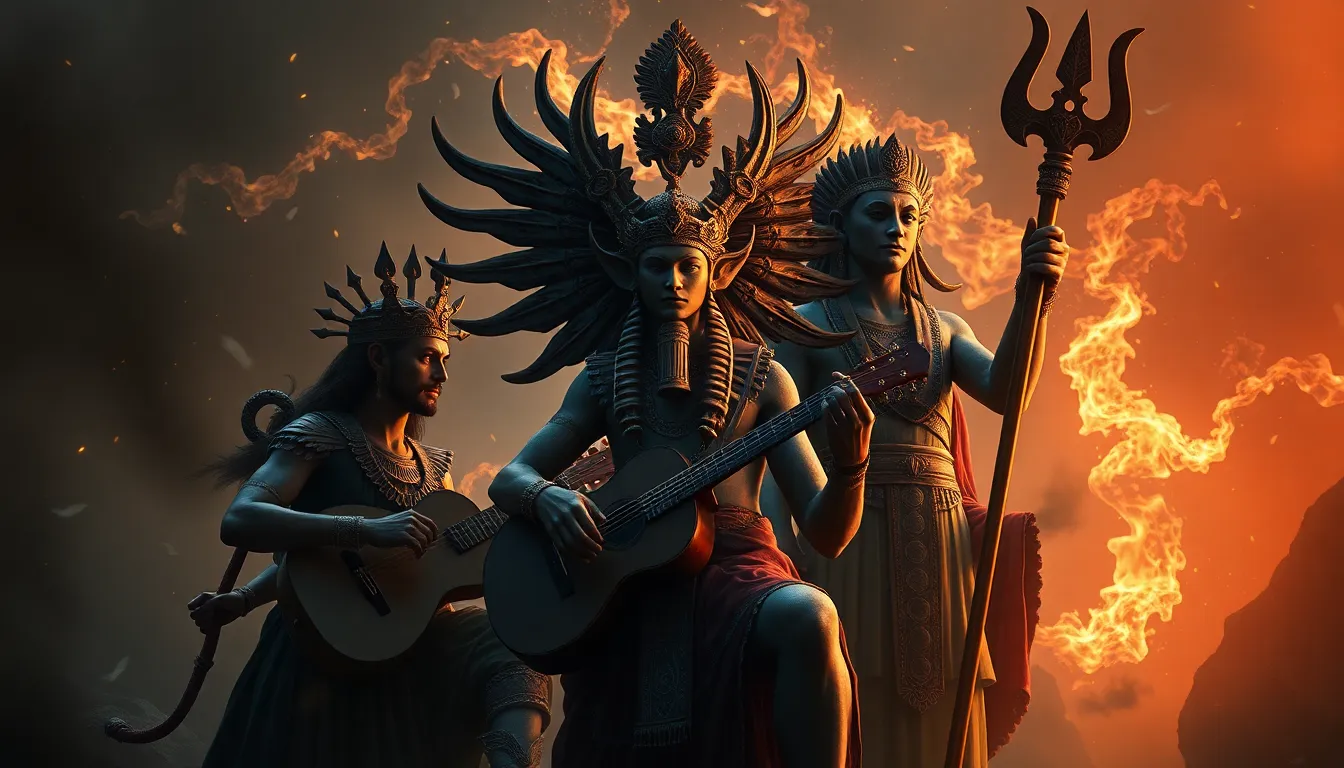Exploring the Trickster Archetype Across Cultures
I. Introduction to the Trickster Archetype
The Trickster archetype is a fascinating and complex figure found across various cultures and mythologies. Defined as a character who embodies mischief, cunning, and a disregard for societal norms, the Trickster often serves as a catalyst for change and transformation.
Throughout history, Tricksters have played significant roles in mythology and folklore, often teaching valuable lessons through their antics. This article aims to explore the Trickster archetype across different cultures, highlighting its evolution, significance, and impact on society.
II. Historical Context of the Trickster Archetype
The Trickster archetype has its origins in ancient mythologies, where it often appears as a creator, a thief, or a shapeshifter. Over time, this figure has evolved, adapting to the cultural contexts in which it appears.
From a psychological perspective, Carl Jung identified the Trickster as a vital aspect of the human psyche, representing the chaotic and unpredictable elements of life. This understanding emphasizes the Trickster’s role in personal and collective transformation.
III. The Trickster in Native American Cultures
In Native American cultures, the Trickster is often represented by characters such as Coyote and Raven. These figures are known for their cleverness and ability to bend the rules of nature and society.
- Coyote: A prominent figure in many Native American tribes, Coyote is known for his trickery and wisdom. His stories often convey lessons about the importance of humility and respect for the natural world.
- Raven: In some cultures, Raven is a creator and a trickster, often associated with bringing light to the world. His tales emphasize transformation and the interconnectedness of all beings.
These Trickster tales serve to convey morals and cultural values, illustrating the significance of the Trickster in Native American societies.
IV. The Trickster in African Mythology
African mythology features notable Trickster characters such as Anansi and Br’er Rabbit. These figures are integral to community storytelling, often embodying the struggles and triumphs of the people.
- Anansi: A spider figure in West African folklore, Anansi is known for his cleverness and ability to outsmart more powerful opponents. His stories often convey messages about wisdom and resourcefulness.
- Br’er Rabbit: Originating from African American folklore, Br’er Rabbit uses his wits to navigate challenges and outsmart his foes, reflecting themes of resilience and ingenuity.
The Trickster’s role in these narratives reinforces social norms and values, serving as a mirror to the community’s beliefs and practices.
V. The Trickster in European Folklore
European folklore features several Trickster figures, including Loki from Norse mythology and Puck from Shakespearean plays. These characters often embody chaos and challenge societal norms.
- Loki: A complex figure in Norse mythology, Loki is known for his cunning and ability to shape-shift. His actions often lead to both conflict and resolution, reflecting the dual nature of the Trickster.
- Puck: In Shakespeare’s “A Midsummer Night’s Dream,” Puck is a mischievous fairy who creates chaos among the characters, ultimately leading to their growth and understanding.
Through literature and drama, the Trickster serves as a vehicle for cultural reflections and critiques, challenging societal norms and expectations.
VI. The Trickster in Asian Traditions
Asian traditions also feature prominent Trickster figures, such as Krishna in Hindu mythology and Kitsune in Japanese folklore. These characters often embody playful intelligence and spiritual wisdom.
- Krishna: As an avatar of Vishnu, Krishna is known for his playful and mischievous nature. His stories often emphasize love, devotion, and the importance of living a balanced life.
- Kitsune: In Japanese folklore, Kitsune are fox spirits known for their shape-shifting abilities and cunning nature. They often represent the duality of good and evil, teaching lessons about morality and consequence.
Despite cultural differences, common themes of transformation and duality can be observed across Asian traditions.
VII. The Modern Interpretation of the Trickster
In contemporary literature and media, the Trickster archetype has evolved into various forms, often reflecting the complexities of modern society. Characters such as Deadpool and the Joker exemplify the chaotic nature of the Trickster in today’s narratives.
The relevance of the Trickster in modern society lies in its ability to challenge conventions and provoke thought. These characters often serve as mirrors to societal issues, highlighting hypocrisy and injustice.
Moreover, the psychological and social functions of the Trickster remain significant, offering pathways for transformation and innovation in personal and collective contexts.
VIII. Comparative Analysis of Trickster Archetypes
Across cultures, Trickster archetypes exhibit both similarities and differences. Common traits include:
- Mischief and cleverness
- Challenge to authority
- Role as a teacher or moral guide
However, the portrayal of Tricksters is deeply influenced by cultural context, leading to diverse representations and meanings. This universality in the Trickster’s role underscores its importance in human storytelling.
IX. The Trickster as a Catalyst for Change
Tricksters often challenge the status quo, acting as agents of transformation and innovation. Their actions can lead to significant changes in societal norms and values.
Examples of Trickster influence in social movements include:
- The role of folklore in civil rights movements, using trickster narratives to inspire resilience.
- Modern adaptations of Trickster tales in activism, encouraging subversion of oppressive systems.
These examples illustrate how Tricksters can inspire change and foster a sense of hope and resistance.
X. Conclusion
In summary, the Trickster archetype serves as a vital component of human storytelling across cultures. From ancient mythologies to contemporary narratives, Tricksters embody the complexities of life, challenging norms, and inspiring change. Through their cunning and mischief, they teach valuable lessons, reflecting the shared human experience and the ongoing struggle for understanding and transformation.



